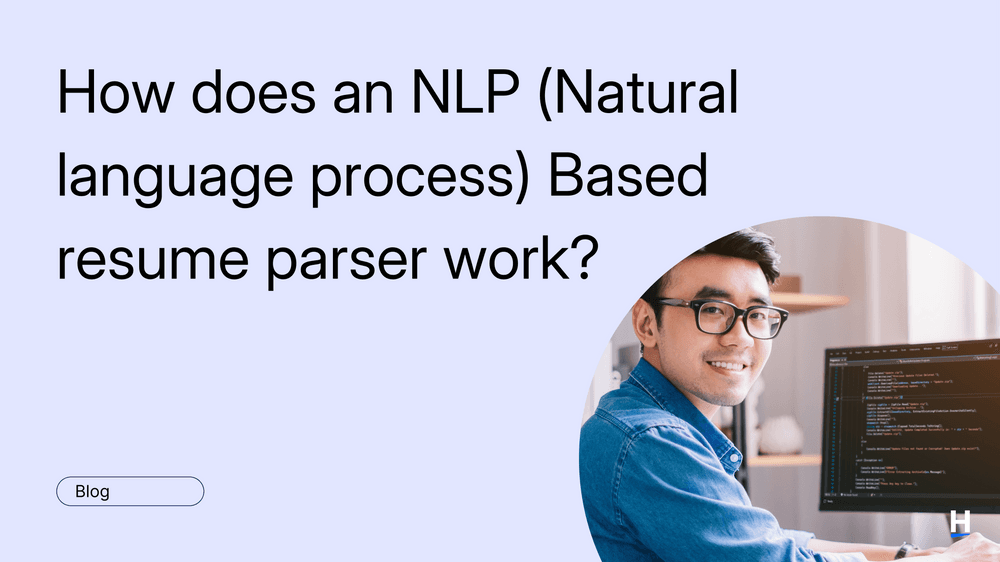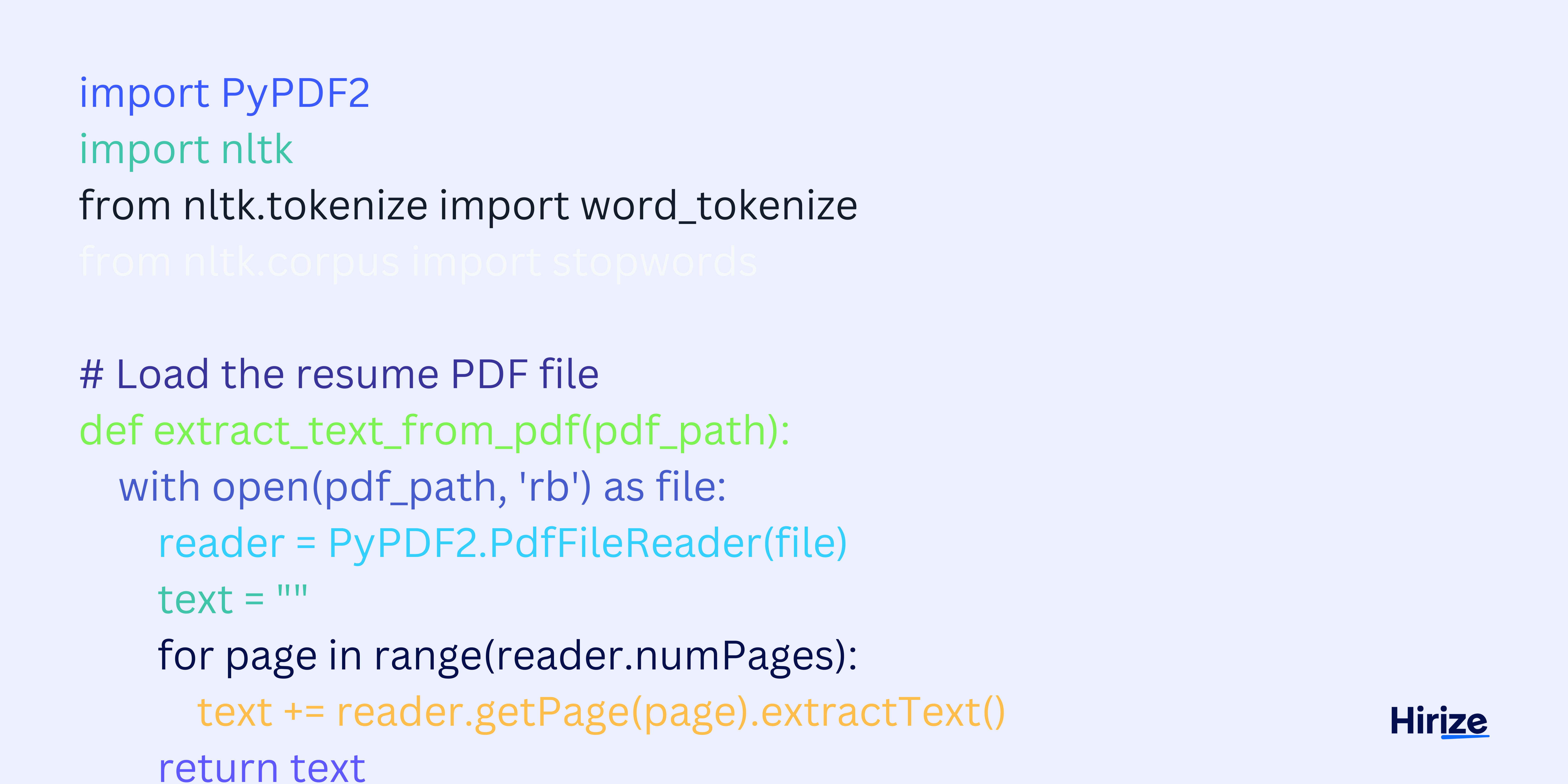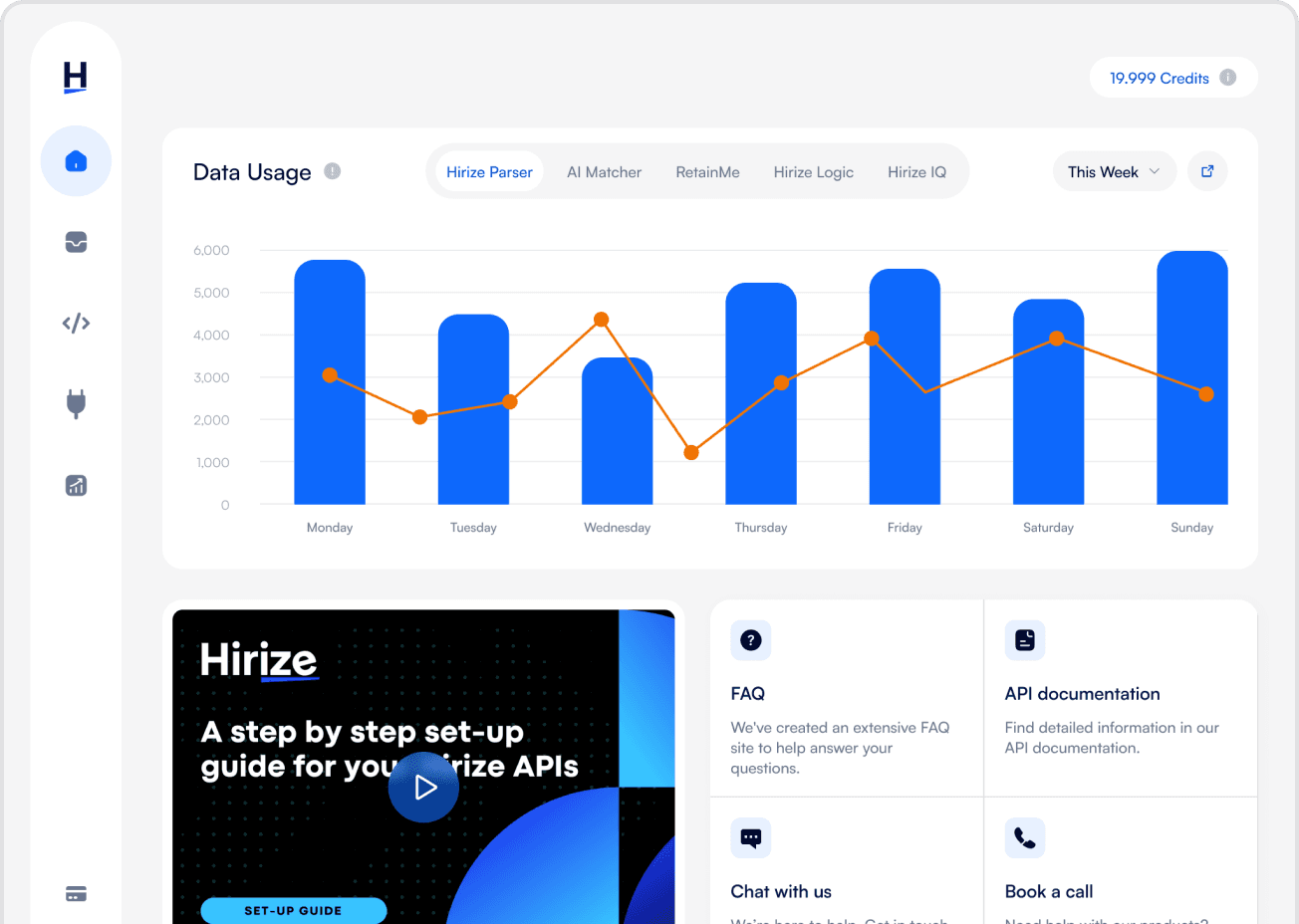superpowers?
How does an NLP (Natural language processing) Based resume parser work?
A resume parser is an AI-based software that can automatically parse and extract relevant information from resumes.

An NLP-based resume parser is a sophisticated tool that uses Natural Language Processing techniques to extract and categorize information from resumes. Unlike traditional keyword-based systems, resume parsers using NLP understand context, recognize patterns, and interpret human language nuances.
It scans a resume and categorizes each piece of information into predetermined fields, such as abilities, experience, education level, and more.
Natural language processing (NLP) is used by resume parsing algorithms to accurately recognize which keywords are present in resumes and estimate their importance. This saves businesses time when screening large quantities of applicants for open vacancies.
Some resume parsers include extra capabilities, such as auto-categorizing resumes based on employer-specified criteria. This enables recruiters to find individuals that satisfy specific criteria quickly. Organizations gain from utilizing an advanced resume parser with NLP capabilities.
How Does an NLP-Based Resume Parser Work?
NLP-based resume parsers work as below:
1. Document Conversion: The parser first converts various resume formats (PDF, DOCX) into plain text.
2. Text Analysis: Using NLP algorithms, the parser analyzes the text to identify key information.
3. Information Extraction: The system extracts and categorizes data into predefined fields such as contact details, skills, education, and work experience.
4. Structured Output: The parsed information is then presented in a structured format, often JSON, for easy integration with other systems.
This graphic shows the basic process for how a NLP-based resume parsing algorithms works.

What are the Techologies Used By NLP Resume Parsers?
NLP resume parsing relies on several advanced technologies:
1. BERT (Bidirectional Encoder Representations from Transformers): This pre-trained model developed by Google has revolutionized NLP tasks, including resume parsing. It understands context and nuances in text better than previous models.
2. Machine Learning Algorithms: These algorithms help in improving the parser's accuracy over time by learning from new data.
3. Regular Expressions (Regex): Regular expressions are used for extracting specific patterns like phone numbers and email addresses in resume parsing.
4. Named Entity Recognition (NER): This technique helps NLP-based resume parsers in identifying and classifying named entities in the text, such as person names, organizations, and locations.
Why is NLP Needed in Resume Parsing?
NLP is needed in resume parsing because traditional parsers without NLP may often miss the subtle, human nuances in resumes. This leads to less accurate candidate assessments. Leveraging Natural Language Processing in resume parsing enables modern resume parsers to understand text almost as well as humans do.
By employing a resume parser that includes NLP, companies can expedite their screening process with high accuracy. This technology not only reduces the need for manual sorting but also improves the overall efficiency of the recruitment process, ensuring that employers spend more time engaging with the most suitable candidates for their openings.
What are the Benefits of Using a Resume Parser Utilizing NLP?
- An NLP-based resume parser will help you save time and enhance accuracy when screening candidates for job openings.
- You will profit from increased accuracy and efficiency while screening resumes for job openings.
- Employers can quickly discover suitable candidates and reduce the manual effort of reviewing large quantities of resumes by employing a resume parser with NLP capabilities. This will allow firms to save time and resources while still identifying the top applicants for open positions. Employers may and accurately extract pertinent information from resumes using a sophisticated resume parser.
- Finally, a resume parser with natural language processing (NLP) offers numerous benefits for firms trying to streamline their recruitment procedures. It aids in fast screening through large quantities of applications so that recruiters can easily find potential applicants who meet specific employer-specified characteristics.
Hirize provides a resume parser with NLP; check out our product page here to get started on your path to increased efficiency and accuracy when screening resumes for job vacancies. You may ensure you get the most out of your recruitment efforts by selecting the best resume parser.
Test the Hirize resume parser now!
superpowers?



